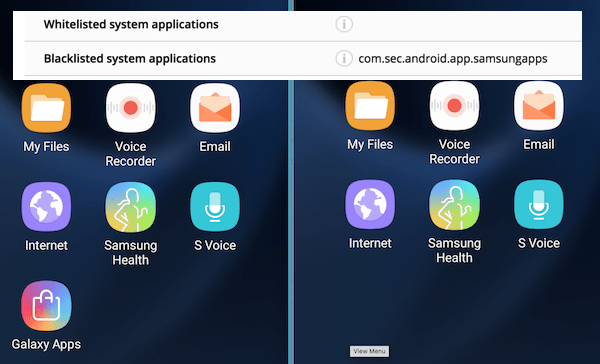New Suggestions For Choosing Credit Card Apps
Wiki Article
What Can I Do To Determine If My Credit Card From The Us Is Reported To Be Lost?
Follow these steps to find out whether your credit card was discovered to be stolen in the USA Contact Your Credit Card Provider
For customer service, dial the number on the back of your credit card.
You can ask the representative to verify the validity of your card.
You will be asked to verify your identity by providing personal details and your credit card details.
Check Your Account Online
Log into your online account to access credit cards or banking.
Check for notifications or alerts regarding your card's status.
Review the transactions that have occurred recently and find suspicious or illegal activity.
Check Your Credit Report
Obtain a free copy of your credit report from each of the three major credit bureaus (Equifax, Experian, TransUnion) through AnnualCreditReport.com.
You should look over your credit report for suspicious inquiries or unfamiliar credit accounts.
Fraud Alerts (and Security Freezes)
It is worth considering putting an alert for fraud or a security freeze on your credit report if you suspect fraud or identity theft.
A fraud alert will inform creditors that they need to be extra cautious to confirm your identity prior to providing credit. But the credit freeze can make it difficult to access your credit report.
Watch out for any suspicious behavior and report it.
Report any suspicious transactions or unauthorized purchase to your credit cards issuer.
Inform any suspicious cases for investigation to the Federal Trade Commission. You may also file a complaint with the police station in your area.
Contacting the company that issues your credit card, reviewing your account activity online, monitoring your credit report and staying vigilant for any signs of unauthorized activity You can be proactive in protecting yourself from credit card fraud and resolve any problems with the reported theft of your credit card.

What Does Being On A Blacklist Mean?
When a credit card is said to be on the blacklist, it generally means that the card is flagged or blocked by the card issuer or financial institution due to suspicion of suspicious activity, security concerns, or other reasons that could be related to risks.Being on a blacklist indicates that the card is temporarily banned to certain transactions or use until the issue is fixed or verified by the person who holds it. The reasons for a card being added to the blacklist may differ and might include-
Suspected Fraud - Unusual or suspicious transactions made on the card that cause fraud detection systems to be activated could result in the card being restricted to protect the card.
Security Risks In the event of signs of compromise (unauthorized access, data breaches involving card numbers, or irregular spending patterns) the card may be flagged to protect.
Identity Verification Problems- Issues in proving the identity of the cardholder in transactions can result in the temporary blocking of the card, especially when an additional verification is required.
Card Lost or Stolen - If you report the lost or theft of your card the issuer will block it to prevent unauthorized access until a replacement card has been issued.
Suspicious Activity Identifiers- Any behavior or activity associated with the card that is suspicious, such as several declined transactions, geographic anomalies, or unusual spending patterns, could trigger temporary block.
If a credit card is placed on a blacklist person who holds it will not be able to access credit, or capability to use the card for transactions might be restricted until the issuer determines the validity of the card, or settles any concerns regarding potential security or fraud. To resolve the issue and confirm any transactions, it's important that the cardholder contacts the issuer as soon as possible.

Cybersecurity Experts Are Trained To Identify And Monitor Cyber Threats Including Credit Card Data.
Cybersecurity experts use a variety of strategies, tools, or techniques to monitor, identify, and detect cyber threats. This includes stolen credit card information. Here are a few of the more popular methods.
To keep up-to-date with the latest security threats and vulnerabilities, gather data from multiple sources, including forums such as threat intelligence feeds, forums and monitoring of the dark web.
Network Monitoring and Intrusion Detection-
Use software designed for monitoring network traffic, and detect unusual activity and suspicious behavior that could indicate unauthorised access or data breaches.
Penetration and vulnerability tests-
Regularly conducting assessments to find weak points. Penetration testing is a simulation attack that exposes weaknesses and assesses the security capabilities of an organization.
Security Information and Event Management (SIEM)-
Implementing SIEMs to analyze and aggregate log data (from firewalls or servers, applications, and firewalls) in order to recognize, track, and react immediately to security breaches.
Behavioral Analytics
Conducting a behavioral analysis to find odd patterns or variations from normal user behavior in systems or networks, which could signal a potential compromise.
Threat Hunting
Recognizing potential threats through analysis of logs or data traffic, as well as the system's information.
Endpoint Security Solutions
Use endpoint security (such anti-malware software, endpoint detection, and response tools such as endpoint detection tools, response tools, etc.) to safeguard the devices as well as your endpoints from malicious actions.
Data encryption and Protection
Implementing encryption technologies to secure sensitive information, including credit card numbers, both during transport and at rest, to lower the chance of data breaches.
Incident Response and Forensics
In order to react quickly in the event of security breaches, an incident response planning is essential. Conducting an investigation to determine the nature, impact and root cause of security incidents.
Cybersecurity professionals combine these approaches and a deep understanding of cyber threats and compliance regulations, as well as the best practices to identify and mitigate cyber threats. This includes those involving compromised card information. A proactive approach to security constant monitoring and threat intelligence are crucial for maintaining a strong cyber security. View the best savastan for blog examples.
